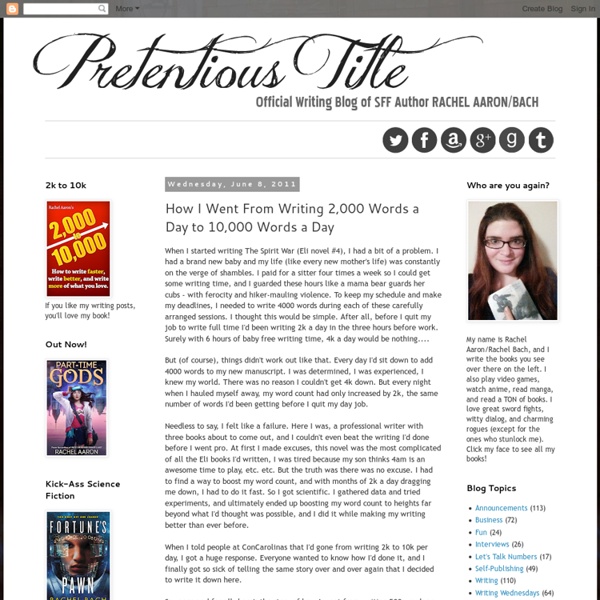20 Tips For Writing a Captivating Short Story (Part 1)
by Mindy Halleck Today, as I edit, trim, cut, and otherwise obliterate a short story I wrote that ended up to be 8,000 words, but needs to be 5,000 words, I am reminded of this quote: “Not that the story need be long, but it will take a long while to make it short.”
m.guardian.co.uk
From time to time, this column is asked for advice, sometimes obsessively, about decoding the many mysteries of "the world of books". There's a widespread view, held by those looking from the outside, that there must be a philosopher's stone for success in literature, a magic formula that will turn everything to gold. The truth is much closer to Thomas Edison's definition of creativity: "1% inspiration, 99% perspiration." So this is not an advice column.
Lifewriting Classes
Steven Barnes' Free Writing Class! What follows is, in slightly modified form, the complete text of the 9-week writing class I've taught for years at UCLA. To my knowledge it is the only completely free program of its depth and scope available on the WWW.
Truths About Fiction
The following essay was previewed in the class that Stephen Graham Jones taught for LitReactor, Your Life Story Is Five Pages Long. 1. The reader should never have to work to figure out the basics of your story. Who’s whose wife or husband, what the time period is if that matters, why these people have broken into this house, and on and on, just the basic, ground-level facts about your story.
Exercises in Writing for Beginning Writers
Instructor: Jim Manis Email: jdm12@psu.edu Exercises to Generate Creativity Copyright @ 2001 The Pennsylvania State University
25 Things You Should Know About Character
Previous iterations of the “25 Things” series: 25 Things Every Writer Should Know 25 Things You Should Know About Storytelling And now… Here you’ll find the many things I believe — at this moment! — about characters:
MASTER LIST of Physical Descriptions!
Sometimes it can be hard to find the right words to describe individual facial features, faces in general, bodies, and even hair. I’m hoping this post will be a good resource for describing the looks of characters in your story. Before I get to the long list, I have a couple of notes and words of advice: When you’re in a character’s POV, their attitude toward another character’s appearance may change over the course of the story as their relationship to that character changes. A classic case in point: Mr. Darcy goes from saying Elizabeth Bennet is “tolerable, but not handsome enough to tempt me,” to “one of the handsomest women of my acquaintance.”
50 Free Resources That Will Improve Your Writing Skills - Smashing Magazine
Advertisement Today, too many websites are still inaccessible. In our new book Inclusive Design Patterns, we explore how to craft flexible front-end design patterns and make future-proof and accessible interfaces without extra effort. Hardcover, 312 pages. Get the book now!



